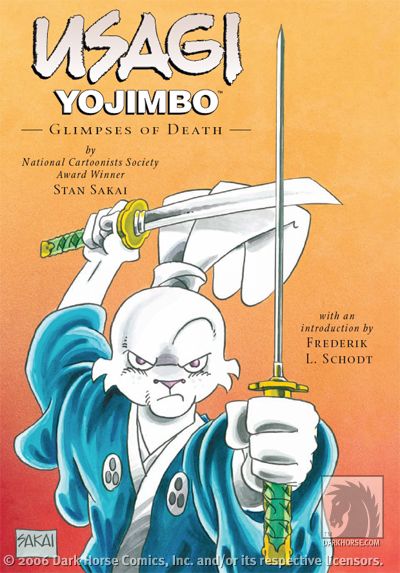Spider-Girl, v. 6: Too Many Spiders!
Collects: Spider-Girl #28-33 (2001)
Released: June 2006 (Marvel)
Format: 144 pages / color (digest size) / $7.99 / ISBN: 0785121560
Spider-Girl is Marvel’s little title that could. Based on an issue of What If? (v. 2), Spider-Girl is the last survivor of a doomed comic line (M2) that focused on characters about a generation later than the current Marvel Universe. This continuity is dominated by the offspring of current heroes, and Spider-Girl is May Parker, daughter of Spider-Man.
The series lasted 100 issues and will be relaunched as Amazing Spider-Girl in October. Part of its longevity comes from the sale of cheap digest reprints to the bookstore market. Spider-Girl, v. 6: Too Many Spiders! is the latest of these volumes.
Writer Tom DeFalco and artist Pat Olliffe tell old-school stories, stories that hearken back to the early days of Amazing Spider-Man. That’s good, in many ways; there aren’t many books that consistently give readers simple, straightforward superhero stories. It’s strange, but it’s true.
On the other hand, DeFalco (and Olliffe, who’s listed as co-plotter) retell / mine / copy old Spider-man stories. In this volume, May deals with losing her powers, which her father has done more than a few times, and then she regains them, as he always does. Other choices seem a little iffy. A new Spider-Man comes to New York, a probable link to the Clone Saga — now there’s a plot graveyard no one wants exhumed. The Steel Spider is a joke, and even 20 years after his last appearance, the joke’s wearing a little thin. Perhaps most bizarre, DeFalco choose George Washington Bridge — a former associate of the outlaw mutant Cable, a former high-ranking member of SHIELD, and a character I don’t think he’s ever had much contact with — as president of the United States. Weird.
This volume feels very missable. May lost her powers at the end of the previous volume, and in Too Many Spiders, she has to deal with it. She’s spunky, and she grows as a character, realizing she has responsibilities whether or not she has powers. But the powers unsurprisingly come back by the end of the volume, and the issues collected seem to be waiting around for that to happen. Nothing happens in May’s love life. There’s an issue with the Steel Spider, and a few taken up with Raptor and the Buzz, none of which are too exciting. Neither one of them is a villain now; in fact, the world seems to be taking it easy on May while she’s lost her powers.
The fights lack oomph; May battles the Avengers, Tony Stark’s superpowered lackey, the reformed Raptor, and the new Spider-Man. None of these are villains. The characters of Normie Osborn, Raptor, and the Buzz are softened so that they don’t / can’t provide any opposition to May, and even Mary Jane and Peter aren’t able to effectively butt into May’s life like they want. The lack of a good villain, the lack of a menace or even a challenge adds to the feeling of missability.
The storylines with Raptor, Normie, and the Buzz moving toward the right side of the law also interesting, but they lack a little something; May has no doubt of their sincerity, so she has no qualms about defending them against her pals in the Avengers. The reader knows May is right as well, so there’s no tension. Unless this is a set up for stories down the line about at least one reformed villain, the part fails to live up to its intrigue. Besides, May isn’t exactly awash in catch villains. She can’t really afford to give them up.
Because of the circularity of the powerlessness plot, Too Many Spiders seems like a cul-de-sac. It’s not an essential volume; on the other hand, its strengths lie in the strengths that have been infused into the Spider-Girl title: the setting, the old-school style, and the smoother continuity.
Rating: ![]()
![]() (2 of 5)
(2 of 5)
Labels: 2, M2, Marvel, Pat Olliffe, Spider-Girl, Tom DeFalco





 Probably no one would have thought the comic book adventures of an anthropomorphic rabbit samurai would last 20 years when Usagi Yojimbo debuted in Albedo #2 in November 1984.
Probably no one would have thought the comic book adventures of an anthropomorphic rabbit samurai would last 20 years when Usagi Yojimbo debuted in Albedo #2 in November 1984.  100 Bullets is a series by Brian Azzarello and Eduardo Risso that is filled with sex and violence and desperation and violence and subterfuge and very, very violent violence.
100 Bullets is a series by Brian Azzarello and Eduardo Risso that is filled with sex and violence and desperation and violence and subterfuge and very, very violent violence.  Because you didn’t demand it, Marvel released the Champions in the 1970s. It was sort of the rock supergroup concept applied to superheroes: recognizeable heroes at loose ends tossed together to see what happens.
Because you didn’t demand it, Marvel released the Champions in the 1970s. It was sort of the rock supergroup concept applied to superheroes: recognizeable heroes at loose ends tossed together to see what happens. 